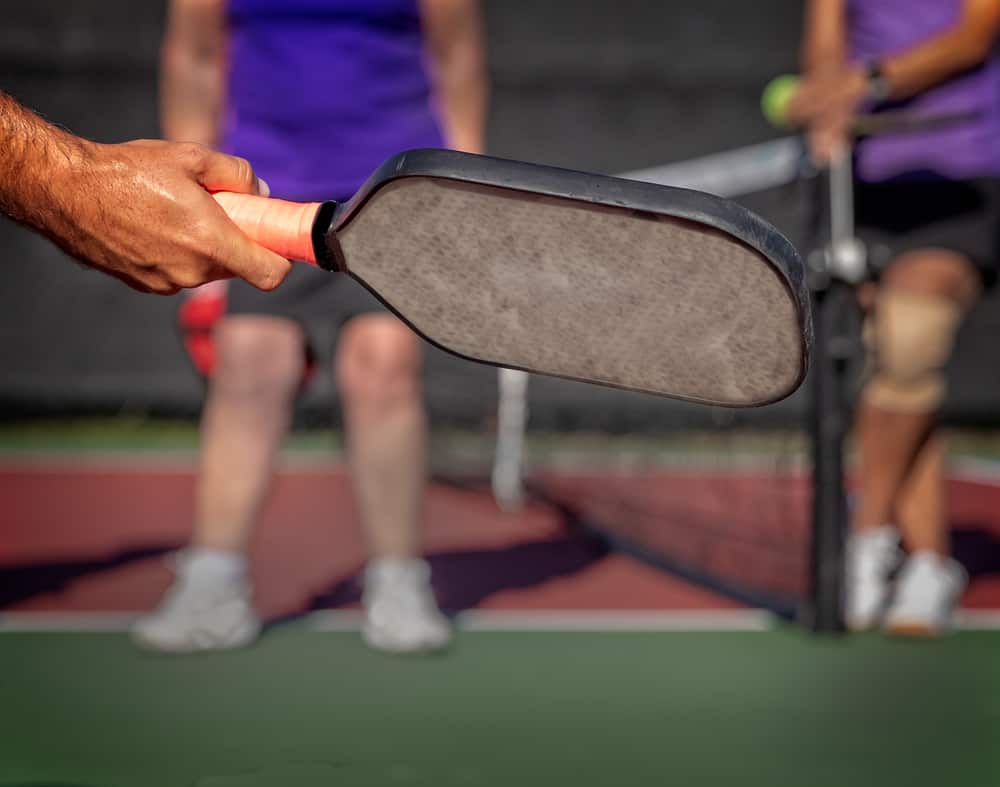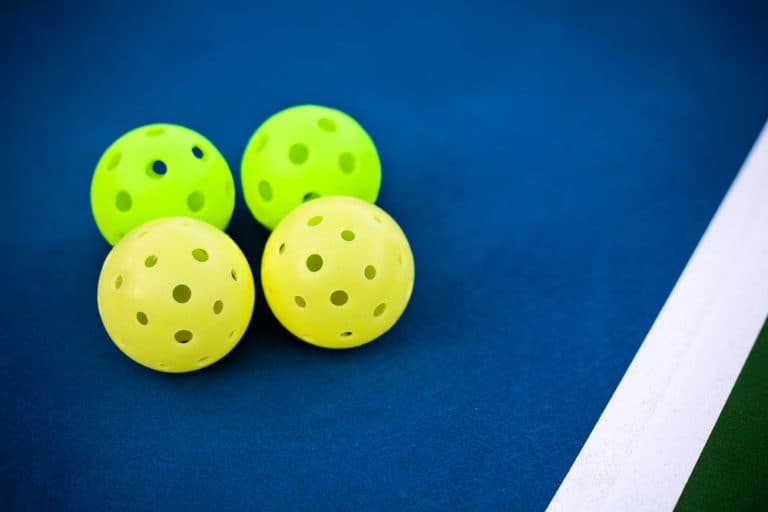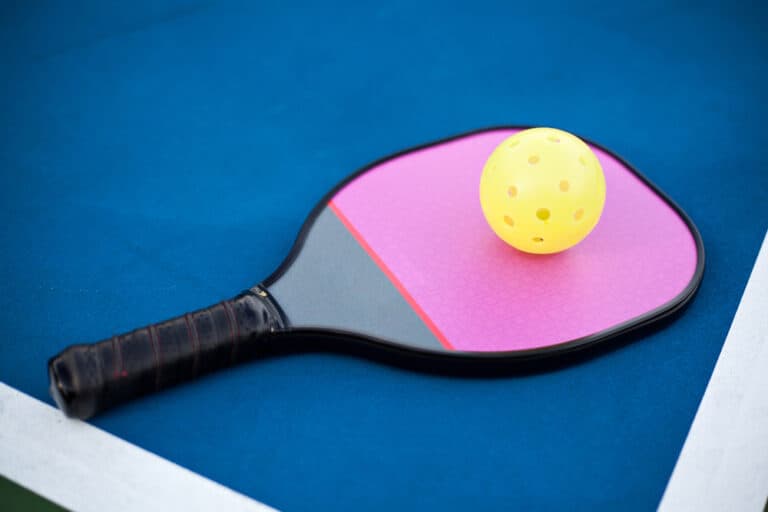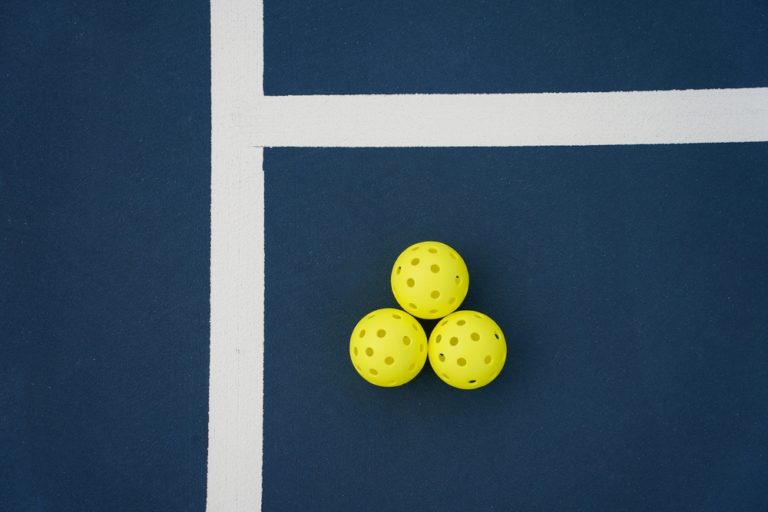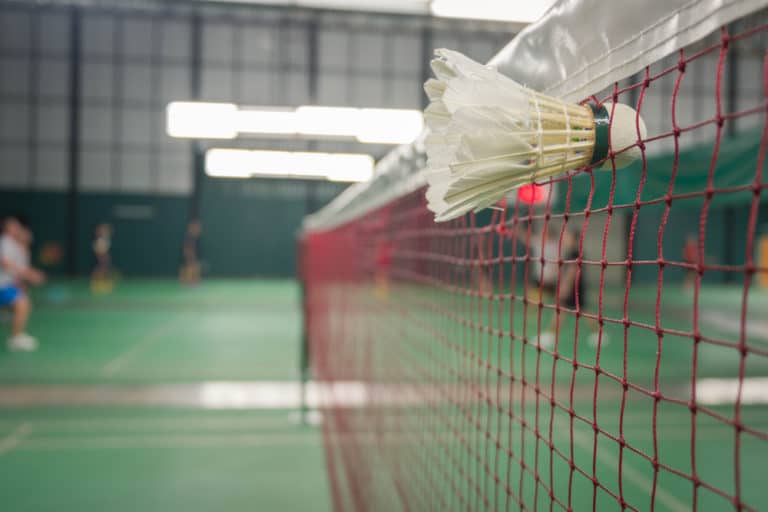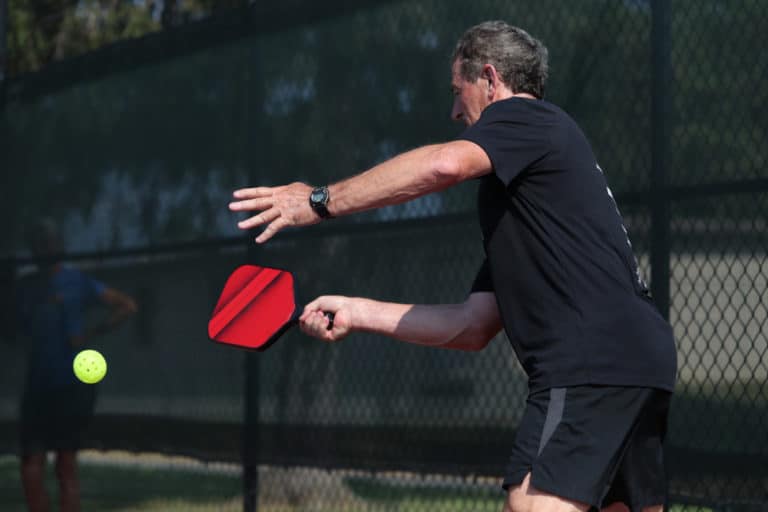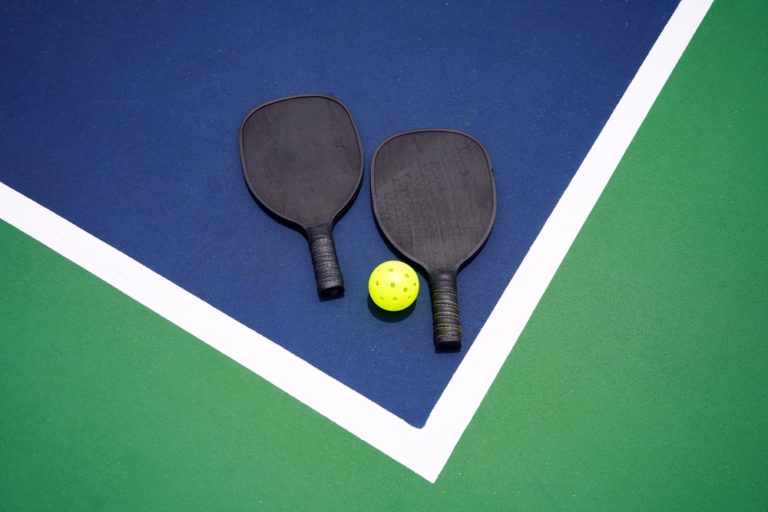Where Do You Put Lead Tape On A Pickleball Paddle?
More and more players are finding that they want to customize their pickleball paddles, which extends from the grip size to the paddle’s weight. In terms of the weight, you can always purchase heavier or lighter paddles, but what happens when you get to a point where the paddle just does not feel right during play? So now we want to find out about putting on lead tape.
Lead is a heavy metal that even comes in tape form, known as lead tape, and where we place it on the pickleball paddle will come down to the effect we want it to have on the paddle. In short, though, you can put it on the top, sides, all around the edge guard, and even the paddle’s handle.
Whether you are turning professional or joining those who merely play for leisure purposes, you may have found that your paddle just does not feel right in your hand while you are playing. Thus you wonder how to make adjustments to the paddle, and one common way is to place lead tape on particular parts of it. So be sure to read on to learn about the placement of lead tape on the paddle.
Where Is Lead Tape Placed On A Pickleball Paddle?
When there is no lead tape present on the paddle, you will typically find that most of the weight is based in the handle. But if you want to have the weight more evenly distributed or for a particular section to be heavier, you can apply lead tape to it. So in this example, you may want to add weight to the head.
With other paddles, the weight is distributed more along the head section of the paddle, and in this case, you might opt to put lead tape on the handle to even things out a little more. When it comes to the lead tape, what is remarkable is that it typically comes off relatively easily, so if you make the adjustment and are not happy with it, you can always make the necessary alterations.
Coming to the crux of things, though, there is no definitive part of the paddle on which you have to place the lead tape, but rather the choice comes down to you and what you wish to achieve by adding the tape. There are various parts you can add the weight to the paddle, and below we shall discuss the where and why you would place it on these given positions.
Also, note that after placing the lead tape on any specific part of your paddle, you ought to cover it with electrical tape or other appropriate tapes to ensure that the lead tape stays affixed and that your paddle does not give off a reflective glare.
Placing Lead Tape All Around The Paddle’s Edge Guard
In this case, you will place the lead tape from the point just above the handle and go all the way around the edge guard of the paddle. This will give an overall better balance to your paddle and make the whole thing heavier instead of only one particular section.
Placing Lead Tape On The Paddle Head (At 11 And 1 O’clock)
One thing that must be noted if you add the tape to the head (or top of the edge guard) is that your swings are likely to be a bit slower; however, you will note a definitive difference in the amount of power behind your shots. Not all players can become accustomed to this alteration, so try it out and see if it works for you.
Placing Lead Tape On The “In-Between” (On The 10 And 2 O’clock)
For this position, you will get a broader sweet spot, improving your level of power to a certain degree. Placing the lead tape here gives you the best of the benefits of putting it on the sides and the top of the paddle.
Placing Lead Tape On The Sides Of The Paddle (On 9 And 3 O’clock)
This creates greater power and also reinforces the sweet spot of the paddle. It also aids in balance, especially when you hit a “block” shot. You will have improved control over the ball, and it will not be necessary to strike the ball with the center of the pickleball paddle.
Placing Lead Tape On The Lower Parts (On 8 And 4 O’clock)
This area is relatively close to the grip. Therefore you are less likely to experience much difference in your play, but rather the overall weight of the paddle will simply be increased incrementally. This is a less common position to put the tape, as it does not give you many advantages in any particular area.
Placing Lead On The Grip Of The Paddle
This is also a unique method of adding weight to your paddle. In most cases, it will be heavier at the grip portion of the paddle; however, some people may have paddles where the top is heavier. Another reason to do this is to counterbalance the tape you have placed on the top of the paddle.
To do this, remove the grip and place a strip of lead tape on either side of the handle; following, you will then wrap the grip back onto the paddle and secure the top part with electrical or similar acceptable tape.
Are You Allowed To Add Lead Tape To Your Pickleball Paddle?
In America, there are two primary rules regarding placing the lead tape on your paddle. These include being permitted to alter commercially manufactured paddles and that there is no weight restriction on the paddles. However, you also cannot have the tape extend further than half an inch past the paddle’s edge.
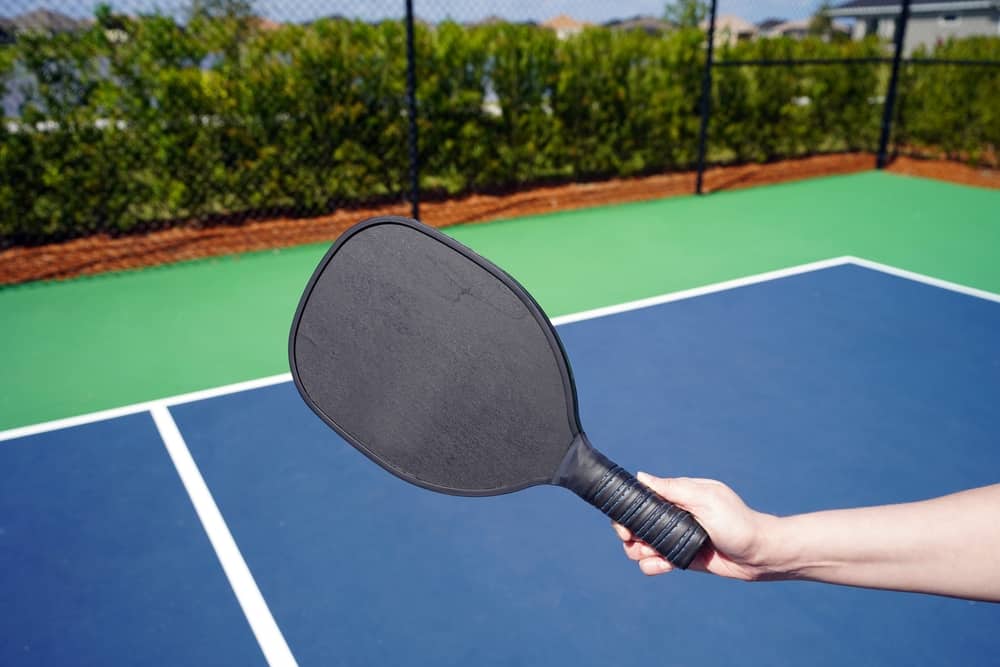
Should You Add Lead Tape To Your Pickleball Paddle?
Adding weight to your pickleball paddle can offer you various benefits, but it must be stressed that adding lead tape is not for everyone. If you are fresh to the sport or only play every so often and are not on some sort of competitive level, you are unlikely to reap the rewards of adding lead tape.
The people who tend to usually benefit from the use of lead tape on their paddles are competitive and professional players. Additionally, they may not even do it themselves; they may have their paddles adjusted for them – not everyone will be able to apply the lead tape correctly.
If you are adamant about adding the lead tape, do first be sure of why you wish to do so. Additionally, especially if you are a new player, you might not know which placement you actually require. On top of that, seeing an improvement in your game will not come overnight. Instead, the weight difference may even throw you off slightly at first while you are getting used to it.
You need to know what you are hoping the addition of the tape will bring, and if you are unsure about this, then it may be a good idea to rethink applying the tape altogether. You also should be aware of the possibility of incurring an injury due to the added weight to the paddle, especially if you have an underlying condition or weakness.
So if you are going to add tape, consider adding it in increments so that you can slowly get used to the alteration in weight and avoid any possibility of injury caused to you. Applying too much tape can lead to an increased risk of injury; however, here is the funny part – it could actually lead to the opposite.
If you find that your paddle is too light, there may be a counterargument to the above. Typically more light weight paddles will add more significant control of the ball, and it is supposed to ensure that you do not incur an injury while playing. But at times, you might be playing with a paddle that is too light, which can also lead to pain or injury. In this case, the tape will help add stability and actually be helpful.
Why Would One Add Lead Tape To Their Pickleball Paddle?
As you have seen, the argument can go either way, and adding lead tape really comes down to each individual. It may either aid or impede your performance, and if possible, it is a good idea to experiment with the tape and see if it works to your benefit.
The paddle you have likely came from off-the-shelf, and the quality and its weight may vary from others, so it may be the case that either it is too light for you or that the balance of the paddle is off and requires adjustment. At first, when you held it in the store, it may have felt just fine, but once on the court, the story changes entirely, and thus people decide to make these alterations.
The whole idea also comes down to personalizing the paddle to suit your needs, as the paddle will not have been made with you specifically in mind, but rather a particular section of the market. So even some good paddles may require a bit of tweaking here and there. Or it may be that your style of play alters, and with that, you need your paddle to adjust as well.
When it comes to the weight that each inch of tape adds, it is usually about 2 grams (0.07 oz), so unless you are applying it to the entire paddle, the general feel will not change that much, but the effects will be felt, especially if you are a seasoned player. So, therefore, let us now look at some of the reasons one would apply lead tape to their pickleball paddle.
Creating A Broader And More Defined Sweet Spot
Sometimes, the sweet spot of the paddle is either too small, or it just does not satisfy the player in question, and therefore they will opt to extend this spot, so they can play the shots perfectly in the manner they see fit. So as mentioned, some positions of the tape aid in this area, and you will have more stability overall when you are striking the ball.
Creating Greater Overall Stability
This point follows very closely to the previous one and is all about creating a paddle that really feels comfortable, not just in your hand, but also when you are striking the ball. It will also help alleviate potential pain in the wrist or elbow and make for smoother shots.
By adding lead tape, you are also less likely to feel the vibrations you would typically experience if you do not hit the ball just right. If you are happy with your paddle but are currently experiencing problems such as tennis elbow, then adding lead tape for the interim while your arm heals could be a great idea.
Giving More Punch And Power To Your Shots
With more weight behind your strikes, you will ultimately have shots that create more significant power and force. This is why professional players, in particular, like to add lead tape to their paddles (along with the previous 2 reasons). The difference between them and the average player, though, is that they also tend to have the strength to back up the additional weight.
This means that their shots are not slowed down by the additional weight of the lead tape like the recreational player may experience. In this case, as mentioned, the tape will likely be added to the top of the paddle. Whereas in the reasons mentioned above, you will typically place it along the sides of the pickleball paddle.
Conclusion
There are specific rules to take into account when it comes down to it, such as the lead tape needing to be covered so that it stays affixed and does not emit a glare. Otherwise, though, you pretty much have free reign over where you wish to place the tape. But do give it some consideration and test it out; if it does not feel right, you can always change the placement.
Also, if your paddle is already well balanced, perhaps you may not wish to fix the balance, but rather change up how much power there is behind your shots. Or you might simply want to enlarge the sweet spot. Whatever you choose and your reasoning, just make sure it is comfortable and there is no sense of a possible injury.
References
- https://www.youtube.com/watch?v=znlr-lj53FE
- https://thepickler.com/blogs/pickleball-blog/pickleball-lead-tape
- https://sarahansboury.com/should-you-add-lead-tape-to-your-pickleball-paddle/
- https://racquetguys.ca/blogs/news/adding-lead-tape-to-your-paddle
- https://www.pickleballsinfo.com/how-to-add-weight-to-pickleball-paddle/

